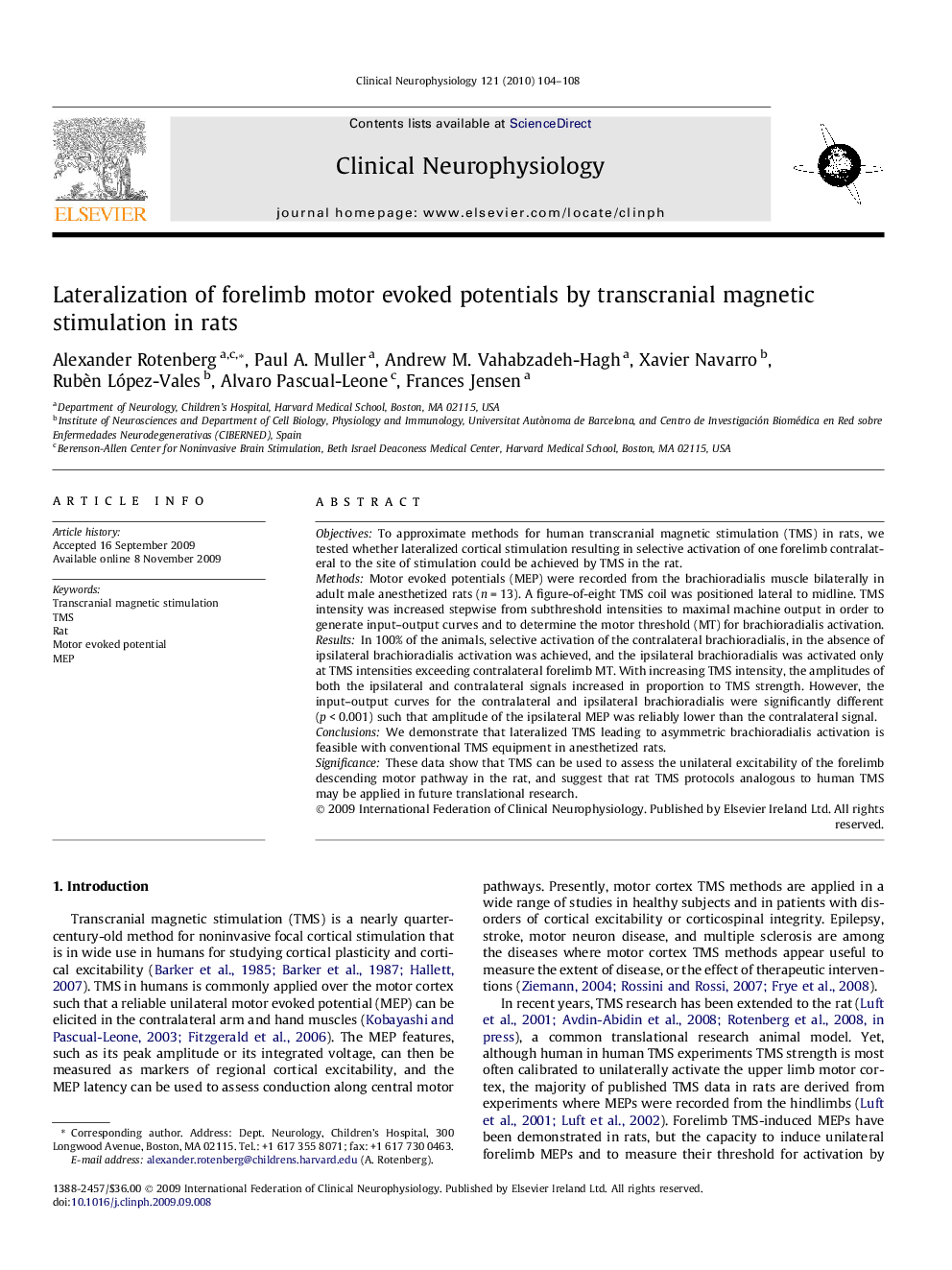| Article ID | Journal | Published Year | Pages | File Type |
|---|---|---|---|---|
| 3045356 | Clinical Neurophysiology | 2010 | 5 Pages |
ObjectivesTo approximate methods for human transcranial magnetic stimulation (TMS) in rats, we tested whether lateralized cortical stimulation resulting in selective activation of one forelimb contralateral to the site of stimulation could be achieved by TMS in the rat.MethodsMotor evoked potentials (MEP) were recorded from the brachioradialis muscle bilaterally in adult male anesthetized rats (n = 13). A figure-of-eight TMS coil was positioned lateral to midline. TMS intensity was increased stepwise from subthreshold intensities to maximal machine output in order to generate input–output curves and to determine the motor threshold (MT) for brachioradialis activation.ResultsIn 100% of the animals, selective activation of the contralateral brachioradialis, in the absence of ipsilateral brachioradialis activation was achieved, and the ipsilateral brachioradialis was activated only at TMS intensities exceeding contralateral forelimb MT. With increasing TMS intensity, the amplitudes of both the ipsilateral and contralateral signals increased in proportion to TMS strength. However, the input–output curves for the contralateral and ipsilateral brachioradialis were significantly different (p < 0.001) such that amplitude of the ipsilateral MEP was reliably lower than the contralateral signal.ConclusionsWe demonstrate that lateralized TMS leading to asymmetric brachioradialis activation is feasible with conventional TMS equipment in anesthetized rats.SignificanceThese data show that TMS can be used to assess the unilateral excitability of the forelimb descending motor pathway in the rat, and suggest that rat TMS protocols analogous to human TMS may be applied in future translational research.
